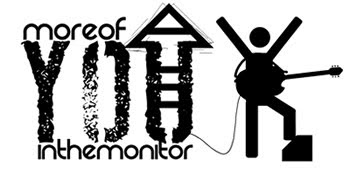BLOG HAS MOVED!
Hey everybody! I have officially migrated this blog to be a part of my newly redesigned website. I will leave these blog posts here, but will no longer add anything new to this blogger site.
You can view all of these posts and upcoming posts here:
You can subscribe to the RSS feed here:
Well, well, well. It has been WAY too long since I've made an entry on the blog. Gonna try to revamp this thing, along with an email newsletter that may happen weekly (go to the website to sign up). Alright, let's get this on...
Raise the Roof (Lower the Floor)
Nope, not talkin' about the old phrase from the '90's "Raise da rooooooof!" I'm talking about the relationship of instruments on the stage and the gain/trim of the sound board. This post is for worship tech teams, as well as musicians/vocalists.
One thing that happens often is musicians on the stage who do not send a hot enough signal (not sending enough volume) to the front-of-house (FoH) sound board. When this happens, the sound guy's only recourse is to increase the gain/trim knob on the mixer (the knob that turns up the gain/volume/power of the preamp right there on the input) in order to get enough signal to be amplified. This is okay to a certain extent, but the more you increase the gain knob, the higher you boost the volume/power of any unwanted noise that is in the channel. This includes any stage volume that is coming into the microphone you're boosting, but I'm more specifically talking about what we call the "noise floor". The "noise floor" is basically all the unwanted noise that is inherently in your audio. It's the "hiss" or "ssssshhhhhhh" you hear when you crank up the gain knob way too far. Every mixer has a noise floor - some more noise than others. It's usually more apparent with cheaper equipment.
Essentially what happens is, when you have to boost the gain knob in order to get enough signal from an audio source, you're not just boosting that audio source, but any unwanted noise that is in that channel. Usually, this results in an ugly "ssshhhhhh" or "hiss" sound that will clutter up your mix and give you a really hard time trying to mix that particular instrument into the mix. The instrument ends up sounding thin, unnatural, and you might as well just mute the channel because it isn't doing you any favors.
I commonly see this issue when dealing with a guitarist or other musician who is humble (which is a good thing), but also timid about playing. They don't want to turn up their guitar, amp, or pedals because they, per their nature, don't want to be up front. This is a great trait and quality in a worship team member, however, they need to be coached by the sound guy about the necessity of proper gain structure of their personal equipment. This can also be caused by musicians who just really don't understand how to set all the gain structure on their pedals and guitar. (Gain Structure: the relationship of all the volume levels of each piece of equipment in a signal chain)
This also happens to bass guitar players who just don't play with any 'umph", barely plucking the strings either for lack-of-confidence in their abilities, or whatever.
More often, you probably see it with vocalists who do not use their microphone correctly. They hold their mic down at the chest and expect the sound guy to be able to mix them into the sound. Or, as vocalists, they have timidity to sing out or they just have a soft voice. Again, this causes thin, lifeless sound, noise, often feedback, and is better off just muted. All of these instances are chances for the sound guy and worship leader to coach their worship team members on proper use and setup of what they are using.
How to Handle
So, how do you handle this when it comes up? Let's take an electric guitarist as our example. During most of the set, the guitarist uses a clean sound with maybe a little bit of drive at times. He has his amp, pedals, and guitar. He turns up his amp and pedals just to right amount so he can hear himself. The sound guy at the sound board will usually have to turn up the gain knob to some extent on the mixer on the guitar channel in order to get hot enough signal. By the way, this applies whether you are mic'ing an amp, or plugging the guitar direct into the system. As you increase the gain, the noise floor increases. Up to a certain point, it's not very noticeable. But this particular guitarist's volume is just too low. You crank that gain knob up, up, up. Sure, you're increasing the volume of the guitar, but you're also constantly boosting the noise. What you'll find is once you get the gain to point where you can hear the guitar loud enough, the noise ends up being just as loud or louder than the guitar signal. This is an immediate distraction that IS noticeable by the congregation. And the cure is very simple: Go to the guitar player, and ask him to turn up his volume (either on the amp if he's being mic'd or direct out from the amp, or on his pedals if he's going direct into the system from his pedal setup). I find that you usually won't have a problem with a guitar player if you ask him to turn up his volume. Of course, the super-humble and timid player may be resistant - however, gently coach them to know that it's affecting the quality of the whole mix and that you need more volume from him in order to fix some issues with the mix. They'll comply because they don't want to be a distraction or a wrench in the cog wheel. I love this worshiper! They are the ones who show a servant's heart Sunday after Sunday. Once they turn up their volume, it will allow you to decrease the gain knob level, which in-turn, lowers the noise floor. The signal you're amplifying is louder than the noise at this point, life and fatness is back in the guitar sound. Incidentally, another time you'll have this problem with guitars (acoustic and ALWAYS electric) is if the player is plugging directly into the system without any sort of preamp or pedal of their own. Electric guitars ALWAYS need a preamp pedal and/or amp, bassists ALWAYS need a preamp pedal and/or amp, and sometimes even acoustic guitars need a preamp. Most decent acoustic guitars have a built-in preamp on the pickup system, and so it's usually not as much of a problem unless they have their guitar volume turned way too low. It can be a problem on cheaper acoustic guitars.
For gain/noise problems with vocalists, it's a simple solution... tell them to hold the mic closer to their mouth and sing louder. Of course, do that in a constructive way. Again, it will give you the gain you need without having to crank the gain knob, and will bring life into a lifeless vocal sound.
So, in short, bring up the volume of the instruments on stage as needed (Raise the Roof), and bring down the sound board's gain knob as needed, lowering the noise floor (Lower the Floor). And always bring the gain knob to full blast on God's Spirit!












